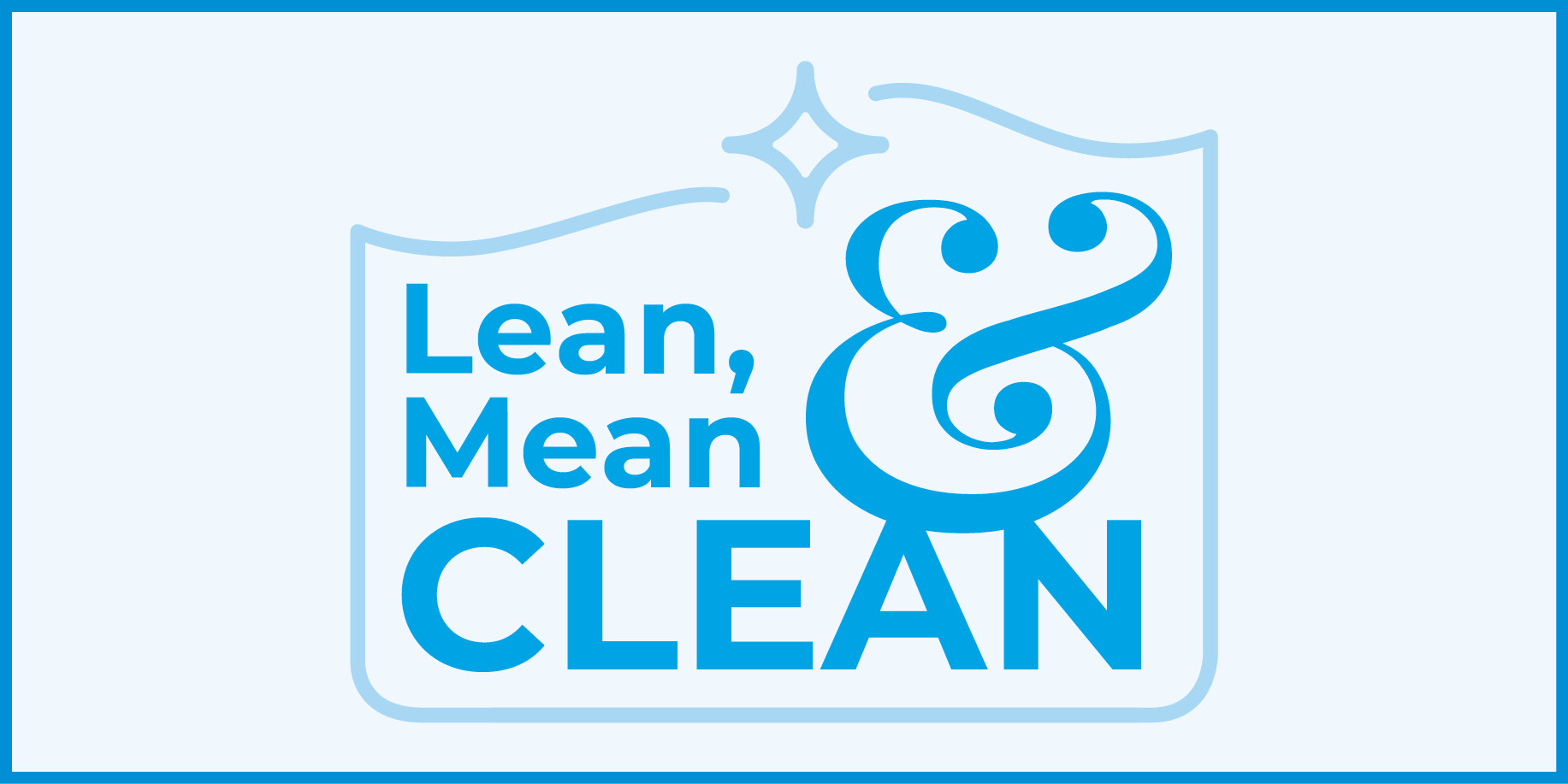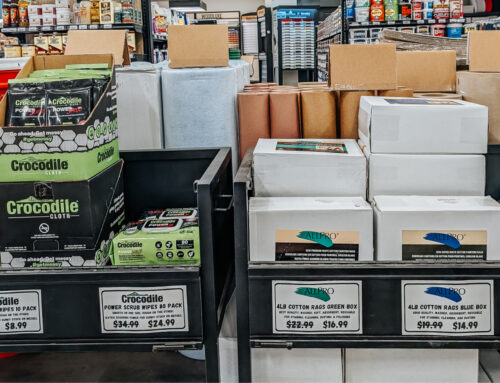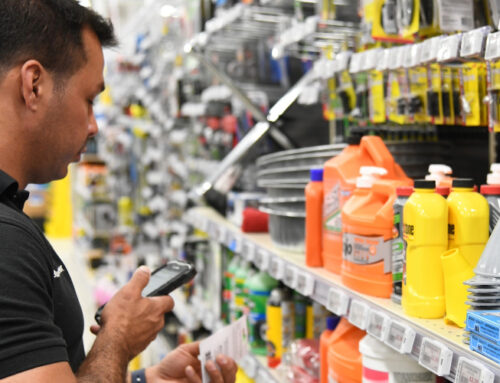Merchandising may be your silent salesman, but when it comes to add-on sales, you want customers to get the message loud and clear. So when selling paint projects, don’t overlook the cleaning products category. As an independent retailer bringing your customers’ projects to life, it’s important to stock basic painting supplies in addition to sponges, rags and other cleaning products to offer a comprehensive solution.
Paint & Decorating Retailer spoke with two retailers who take a similar approach to selling the whole project and share how they organize their stores to make the most of this category.
Meet High Standards
Located between two large cities in California, San Francisco and San Jose, Gray’s Paint Stores serves high-end contractors and DIYers who value cleanliness during their projects.
“These high-end customers expect contractors to be clean,” says Daniel Engels, Gray’s Paint Stores manager. “They do not want to hire a messy contractor because they don’t inspire confidence that they’re going to do the job right. Cleaning supplies are massively important on a job.”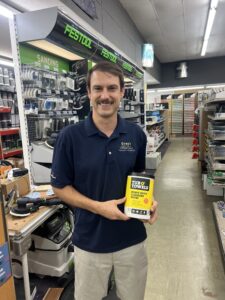
With the majority of his customers being contractors, Engels organized his store layout in a way that best serves them. Walking into the Redwood City, California, location, the first product customers see is the color wall, followed by paint. The middle of the store holds his “mess-making” products.
“We know our customers are going to make a mess, so having the products they’re going to need to clean up that mess within a 6-foot radius of the other products they need puts them in their eyeline and helps them get everything they need for their project,” Engels says. Since he began working at the store in an official capacity in 2020, Engels says he’s seen major innovations in project preparation, as well as cleaning products. He says project preparation is just as important as cleaning up afterward. Strategic Merchandising Leads to More Sales Vermont Paint Co., which has two locations in Burlington and Williston, Vermont, capitalized on noticing certain ways customers shop their store to decide where and how to sell
their cleaning products.
“One of the biggest mess-making jobs in the paint industry is sanding. Six years ago, we picked up the festool line of vacuum extractors. They’ve saved our customers thousands of dollars in terms of time and cut down on the clean up time and made our customers more efficient.” —Daniel Engels, Gray’s Paint Stores manager
Mobile Dust Extractor
The CLEANTEC CT36 E HEPA from Festool is a lightweight, powerful dust collection system made for the job site. It has a 36-liter container and can move around on its swiveling castor wheels while producing high suction and features an antistatic function that prevents buildup during work.
Festool GMBH | festoolusa.com
“We’ve rearranged some of our shelving to be more organized and allow movement and extend the view of the store so customers can see certain products in other areas, hoping they’ll see other items they didn’t know they needed,” says Torin Barker, Vermont Paint Co. manager.
Barker began his career with one of the biggest paint manufacturers in the industry, and during his transition into the retail side, he utilized his experience working in the sales sector to decide what products his store needs and how to merchandise them.
“If a customer is just coming in for a gallon of paint and that’s all they leave with, you’re leaving money on the table,” he says. “From the corporate side, when I was a sales representative, we had customers who used little to no paint, but we could sell them rags and empty buckets for waste. I use that same mindset as an independent retailer.”
Barker says another aspect to having a successful cleaning product category is product selection and proper merchandising. As you merchandise, take into consideration similar products or products that are used with one another. For example, near your paint rollers, cross-merchandise drop cloths and paint tray liners to encourage add-on sales.
“We moved all of our paint off the floor because our customers are already coming in for those products and they know what they’re coming in for,” Barker says. “It’s on us to understand what product best fits their project. Then when we move on to the sundries, there has to be a flow to make it easier on the customer.”
Barker says it’s important to have products like rags and contractor bags in accessible areas near one another in the hopes that the customer will see them as they’re working their way through the store. By training his employees to invest in each customers’ project, he says they’ll do a better job of getting a scope of their project, and find items they’ll need for the job.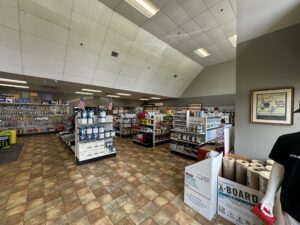
“We’re here to educate the customer,” Barker says. “They may come in and think they just need a gallon of paint and a brush, but then all of a sudden, they’ve got paint all over their floor, they’ve made a huge mess and had a bad experience and that falls on us.”
By selling the whole project from start to finish, it shows customers that you care and want them to find success.
How to Become a PaintCare Location
Currently operating in 12 states and the District of Columbia, PaintCare is a nonprofit established by the American Coatings Association to implement manufacturer-led paint stewardship programs in states with paint stewardship legislation. To be considered to become a PaintCare drop off location, you must be located in one of the states where PaintCare operates and have storage space for its recycling bins, which are the size of a pallet. If your store is accepted into the PaintCare program, you will receive the reusable paint collection bin, training materials and a spill kit.


